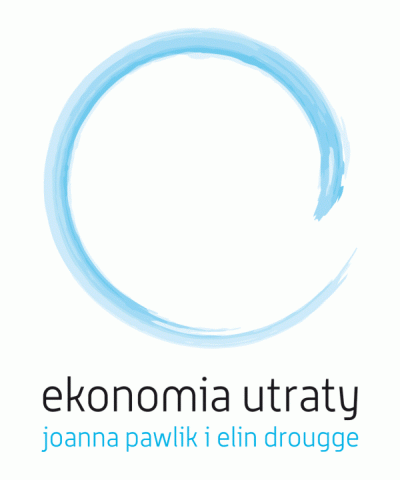redakcja | editing: Karolina Więckowska
Joanna Pawlik
Balans | Balance
16.12.2010-30.01-2011
Galeria Sztuki Współczesnej Bunkier Sztuki
The Bunkier Sztuki Contemporary Art Gallery
katalog | catalogue
autorzy tekstów | texts by: Sylwia Chutnik, Alicja Długołęcka, Lidia Krawczyk, Joanna Pawlik, Stach Szabłowski, Karolina Więckowska oraz uczestniczki projektu | and women taking part in the project
projekt | design: Rafał Sosin
objętość | volume: 128 str
format | dimension: 25x20 cm
ISBN: 978-83-62224-05-0
data publikacji | year of publication: 2010
spis treści | list of contents
Balansowanie | Balancing
Lidia Krawczyk
prace | works
Bóle fantomowe | Phantom Pains
Stach Szabłowski
Fantom | The Phantom
Sylwia Chutnik
Siostrzeństwo amputantek. Z Joanną Pawlik rozmawia Lidia Krawczyk
Sisterhood of the Amputees. Lidia Krawczyk talks to Joanna Pawlik
Podwójnie uwięzione. Z dr Alicją Długołęcką rozmawia Karolina Więckowska
Doubly Imprisioned. Karolina Więckowska talks to Alicja Długołęcka, PhD
Wypowiedzi uczestniczek projektu | Texts by women taking part in the project
wystawa | exhibition
Biogram artystki | Artist's biographical note
***
„Karolina Więckowska: Widziała pani wszystkie filmy Joanny. Który najbardziej zapadł pani w pamięć?
Alicja Długołęcka: To co mnie w tych filmach uderzyło to proces, podczas którego mogłam obserwować to, co działo się z Joanną przez cały ten czas. Joanna zastrzega się, że nie jest to dla niej psychoterapia (jest to w końcu projekt artystyczny), jednak w projekcie widać wyraźnie jej drogę, która jest zdecydowanie drogą autoterapeutyczną. W pierwszych filmach obserwujemy dużo więcej wątków, w których proteza jest przedstawiana jako elementem obcy. Z biegiem czasu przestaje być ona elementem narzuconym, zaczyna być czymś, czym można się bawić. Proteza staje się wyborem, nie koniecznością, a to pierwszy element potrzebny do tego, by mieć dystans, a czasem nawet śmiać z sytuacji, w jakiej przyszło żyć. To przyjęcie kompletnie innej perspektywy. Pierwsze symptomy wyłamywania się ze stereotypu bycia biedną niepełnosprawną kobietą bez nogi, która musi w jej miejsce przykładać sobie coś, co nie jest estetyczne, co jest świadectwem jej inności. Następnym etapem stało się poszukiwanie takich samych kobiet jak ona. I pojawiły się „siostry”. Poszukiwanie w nich piękna, zaowocowało odnalezieniem piękna w sobie. Myślę, że ona to odkryła.
Film Balans pokazuje, jak wielką drogę przebyła Joanna. Odbieram go całkowicie symbolicznie. Joanna stoi na balonie jak na kuli ziemskiej, wykonując przy tym figury wymagające olbrzymiej precyzji i skupienia, niekoniecznie dostępne dla pełnosprawnych kobiet. To film, który różni się od pozostałych. Joanna Pawlik osiągnęła umiejętność balansowania. Stoi na czymś, co jest bardzo niestabilne, a jednocześnie panuje nad całą sytuacją (z jednej strony swoją sprawnością fizyczną, z drugiej strony swoim niezaprzeczalnym pięknem i skupieniem). Ona się tego wszystkiego nauczyła przez lata. Zgadza się to z tym, o czym mówiłam wcześniej, z feministycznym spojrzeniem i byciem samoświadomą”.
Fragment rozmowy Podwójnie uwięzione. Z dr Alicją Długołęcką rozmawia Karolina Więckowska
----------------------------------------
'Karolina Więckowska: You have seen all of Joanna’s films. Which one was the most memorable?
Alicja Długołęcka: What struck me in the films was the process, during which I could observe what was happening with Joanna throughout. Joanna maintains that, for her, this is not psychotherapy (after all, this is an artistic project), but in this project one can clearly see her journey, which is certainly self-therapeutic. In the first films, we notice many more strands where the prosthetic is depicted as a foreign element. As time passes, it ceases to be an element imposed, it begins to be something that it is possible to play with. The prosthetic becomes a choice, and not a necessity, and this is the first indispensable condition: to be able to laugh at the situation in which we are obliged to live. This is acceptance of a completely different perspective. The first symptoms of breaking out of the stereotype of being this poor, unfortunate woman without a leg, obliged to put in its place something which isn’t aesthetic, which is the testimony to her being different. The next stage is to seek out other women who are the same as her. She finds her ‘sisters’. Seeking beauty in them bore fruit in finding beauty in herself. I think that she realised that.
The film Balance shows what a great journey Joanna has travelled. I interpret it as entirely symbolic. Joanna is standing on the balcony as if on top of the planet Earth, performing figures which require huge precision and concentration, which able-bodied women wouldn’t necessarily be capable of. This film is different from others. Joanna Pawlik has achieved the ability to balance. She is standing on something which is very unstable, but simultaneously, she is in control of the entire situation (on the one hand, of her physical ability, and on the other, of her beauty and concentration). She has taken years to learn all this. This all tallies with what I was talking about earlier, with a feminist outlook and with self-awareness.'
An excerpt of conversation Doubly Imprisioned. Karolina Więckowska talks to Alicja Długołęcka, PhD












 Trenerzy audiodeskrypcji Barbara Szymańska i Tomasz Strzymiński / The audiodescription trainers Barbara Szymańska and Tomasz Strzymiński, fot. F. Probosz
Trenerzy audiodeskrypcji Barbara Szymańska i Tomasz Strzymiński / The audiodescription trainers Barbara Szymańska and Tomasz Strzymiński, fot. F. Probosz






































